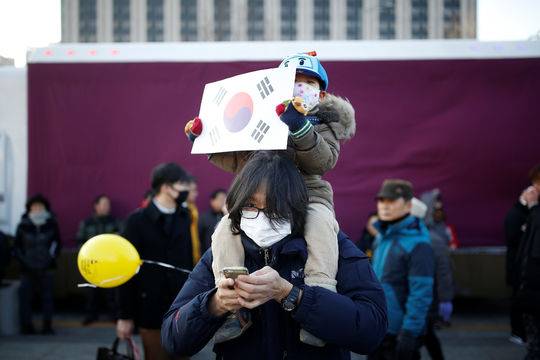The Bank of Korea, the central bank of South Korea, released a report on the 3rd stating that if South Korea cannot take effective measures to boost its sluggish fertility rate, the economy will enter negative growth by 2050. This report states that South Korea's total fertility rate in 2021, which is the average number of children per woman of childbearing age, was 0.81, ranking last among the 35 member countries of the Organization for Economic Cooperation and Development. From 1960 to 2021, the total fertility rate in South Korea decreased from 5.95 to 0.81, ranking among the highest in the world. The report points out that if the current low fertility rate in South Korea is not reversed, the country's economy will experience negative growth by 2050. By 2070, the population of South Korea is expected to decrease from approximately 51 million to less than 40 million. According to analysis by Korean banks, the main reasons for the low birth rate in South Korea include fierce competition, employment difficulties, high living expenses, and concerns about child safety. The report predicts that if the South Korean government takes corresponding measures to address the above reasons, the country's total fertility rate is expected to rebound to 0.845. According to data released by the South Korean Bureau of Statistics in August this year, the number of newborns in the country in 2022 was 249000, with a total fertility rate of 0.78, both reaching the lowest level on record. The total fertility rate of 0.78 is much lower than the 2.1 required to ensure the stability of the country's population. In recent years, the phenomenon of late marriage and non marriage in Korean society has gradually increased, and the fertility rate has been continuously decreasing. Data shows that in 2022, approximately 192000 couples in South Korea registered for marriage, a decrease for 11 consecutive years, setting the lowest record since the start of relevant statistics in 1970.
80% of young people do not get married, and primary school freshmen may fall below 400000 for the first time
According to the South Korean Central Daily News, Kim is currently the majority of young people in South Korea who are single, have a job, are unwilling to find a partner, and prefer to live with their parents. On November 27th, data released by the South Korean Bureau of Statistics showed that 81.5% of young people aged 19 to 34 in South Korea (7.837 million people) are unmarried, an increase of 6.5 percentage points from five years ago. That is to say, 8 out of every 10 Korean youths are unmarried. 20 years ago, this proportion was only 54.5%. Due to the impact of low fertility rates, the lives of young people have also undergone changes, including an increase in single person households and a continuous increase in the proportion of unmarried individuals. According to data cited by The New York Times, although the proportion of marriages worldwide has declined in recent years, the decline in South Korea has been particularly severe. In 2021, 6 out of every 1000 people in the United States got married, while only 3.8 out of every 1000 people in South Korea got married. As the number of unmarried young people increases, the proportion of couples forming families naturally decreases, and the number of single person families still living with or independent of their parents increases. At present, among young Korean people aged 19-34, 55.3% live with their parents and 20.1% live in one person households, both of which are showing a continuous increasing trend.
On one hand, there are more and more single young people, and on the other hand, the fertility rate has been at the world's lowest level for three consecutive years. According to data from the South Korean Bureau of Statistics, the number of new primary school students this year was 4017.52 million. The primary school enrollment target was born in 2016, with a birth rate of 4062.43 million that year. The enrollment target for next year and the birth population in 2017 were only 35777100. Although the actual number of primary school freshmen enrolled may not be exactly the same as the number of births in that year, the South Korean education community generally believes that it is difficult to reach 400000 new students next year. With the continuous reduction of the new population, the scale of primary school freshmen will decrease at a faster rate. The total fertility rate in South Korea decreased from 1.172 in 2016 to 1.052 in 2017, falling below 1 in 2018. In 2020, the total number of newborns dropped below 300000 to 27233700. That is to say, by 2027, the number of new students in the first grade of primary school will decrease by more than 100000 compared to now.
"This means that some social systems in the future will not function properly. For example, the youth who enroll in universities or enlist will disappear, and there will be a shortage of manpower in the labor market," said Choi Seok Ki, a professor at the Graduate School of International Policy at the Korea Development and Research Institute
In response to the decrease in the manufacturing workforce, the South Korean government intends to introduce foreign workers
Korean companies are facing a dual dilemma of difficult employment, rising labor costs, declining market demand, and declining profitability. The changes in South Korea's population structure have led to an increase in the proportion of elderly retired employees. In order to ensure their future retirement life, employers have higher requirements for salary and security, thereby increasing the employment costs of enterprises. According to data from the South Korean Bureau of Statistics, labor costs for Korean companies accounted for 13.5% of total operating costs in 2011, 18.6% in 2020, and an average annual increase of 3.3%. At the same time, the weak market demand has led to a decline in the sales growth rate of Korean enterprises. Taking Korean manufacturing enterprises as an example, the annual average sales growth rate of Korean manufacturing enterprises was 37.2% from 1970 to 1980, and the sales growth rate slowed down to 14.7% from 1980 to 2000. After 2000, South Korea entered an aging society, and the growth rate of sales further declined to an average annual rate of 5.9%.
On May 10th, South Korea's Asia Daily reported that South Korea's manufacturing industry is an important pillar of the country's economy, but in recent years it has faced a serious shortage of manpower. The report released by the Bank of Korea on the 9th analyzed the current situation and future trends of labor force in South Korea's manufacturing industry. The report shows that if the South Korean government does not specify employment promotion policies, the manufacturing labor force will decrease by 240000 people in the next decade. In order to maintain the current scale of manufacturing workforce, it is necessary to introduce foreign labor.
According to the report, the number of employees in low skilled manufacturing is expected to decrease from 1.96 million in 2022 to 1.76 million in 2032. During the same period, the number of highly skilled employees will also decrease from 2.52 million to 2.48 million. That is to say, the manufacturing workforce in South Korea will decrease by 240000 people in the next 10 years. This is a basic speculation based on the assumption that the government does not implement employment promotion policies, taking into account the changes in the structure of workers in various industries and the population size of different age groups.





























